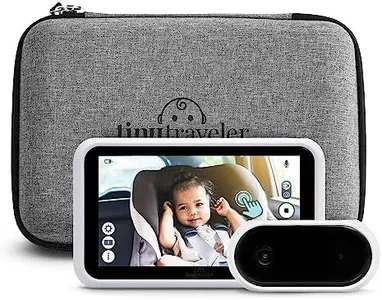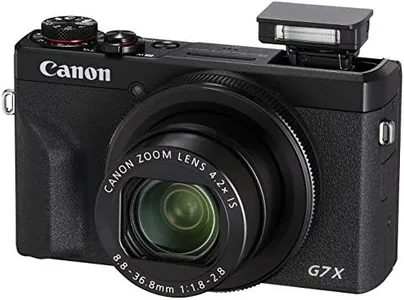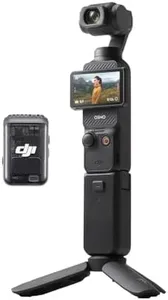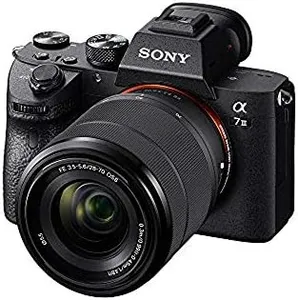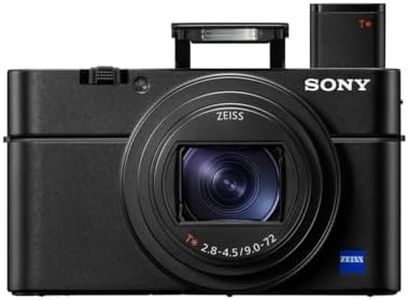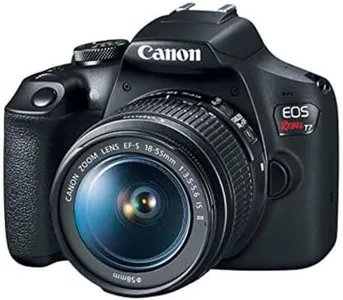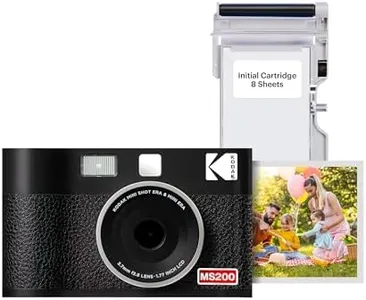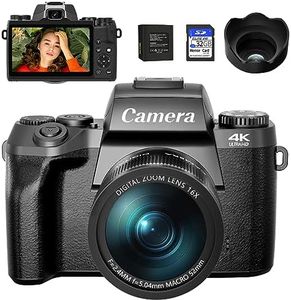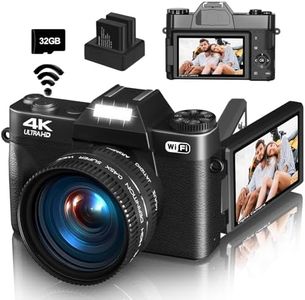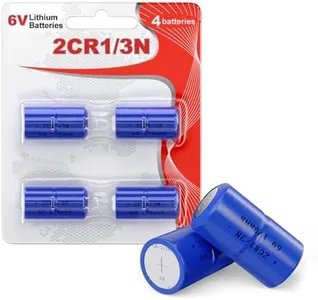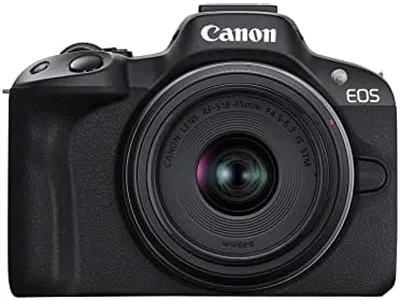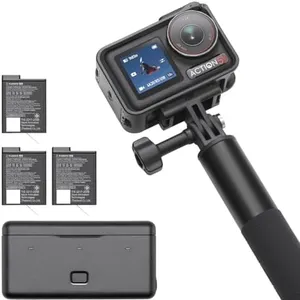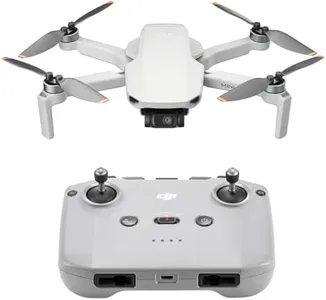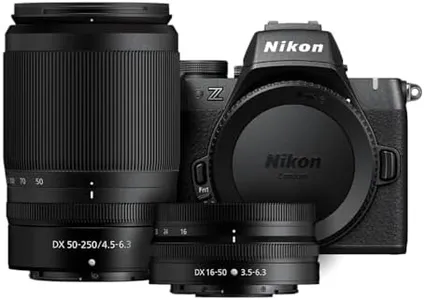10 Best Travel Cameras 2025 in the United States
Our technology thoroughly searches through the online shopping world, reviewing hundreds of sites. We then process and analyze this information, updating in real-time to bring you the latest top-rated products. This way, you always get the best and most current options available.

Our Top Picks
Winner
Canon PowerShot G7 X Mark III Digital Camera (Black)
Most important from
933 reviews
The Canon PowerShot G7X Mark III is a compact travel camera that offers a good mix of features for photographers on the go. Its 20.1 megapixel, 1.0” stacked CMOS sensor paired with the DIGIC 8 image processor ensures high-quality image capture, which is great for travel photography. The 4.2x optical zoom lens (24-100mm f/1.8-2.8) provides versatility, allowing you to take wide-angle shots and zoom in on distant subjects. The optical image stabilization helps reduce blur, which is especially useful when shooting handheld or in low-light conditions.
With the capability to shoot 4K video at 30P and Full HD at 120P, this camera also caters to those who want to capture high-resolution videos during their travels. One standout feature is its ability to be used as a high-quality webcam, which is a plus for those who might want to use it for livestreaming or video conferencing.
On the downside, the camera’s maximum optical zoom of 4.2x might be limiting for users who need more zoom range for distant subjects. Also, while the camera is compact, some may find it slightly bulky compared to other travel cameras with fewer features. The battery life could be better, making it necessary to carry spare batteries for a full day of shooting. Connectivity options are good, but the lack of explicit mention of Wi-Fi or Bluetooth might be a drawback for those who rely on wireless transfer of images. The Canon PowerShot G7X Mark III is a solid choice for travelers looking for a high-quality, versatile camera, provided you can work within its zoom range and manage its battery life.
Most important from
933 reviews
DJI Osmo Pocket 3 Creator Combo, Vlogging Cameras with 1'' CMOS, 4K/120fps Vlog Camera, 3-Axis Stabilization, Face/Object Tracking, Mic Included for Clear Sound, Digital Vlogging Camera for YouTube
Most important from
4486 reviews
The DJI Osmo Pocket 3 Creator Combo is a compact and highly portable vlogging camera perfect for travelers who want high-quality video without carrying bulky gear. It features a large 1-inch CMOS sensor that helps capture sharp and bright 4K footage at up to 120 frames per second, making it great for smooth slow-motion shots and detailed scenes like sunsets or night views. The camera’s 3-axis mechanical stabilization ensures your videos stay steady even while moving, which is ideal for active trips or walking vlogs. Its 2-inch rotating touch screen makes framing shots easy whether you prefer horizontal or vertical video formats.
In terms of audio, it comes with a mic included and supports stereo sound, plus you can connect up to two DJI wireless mics for clearer audio, which is a big plus for vloggers. The camera supports Wi-Fi and Bluetooth for easy sharing to your phone or social media. While the zoom options are limited (max focal length around 20mm), the focus is really on wide, stable, and vibrant video capture rather than zooming. Battery life is decent for its size, but you might want to carry a charger for longer shoots since the battery handle is separate.
A key consideration is that although it offers advanced video features like 10-bit color depth for better editing, these may be more than casual users need and might require some post-editing skills to fully utilize. If you are looking for a travel camera that fits in your pocket but delivers professional-looking videos with easy stabilization and strong connectivity, the Osmo Pocket 3 is a smart choice. It emphasizes video quality and smooth shooting over zoom versatility or extensive photo options.
Most important from
4486 reviews
Sony a7 III (ILCEM3K/B) Full-frame Mirrorless Interchangeable-Lens Camera with 28-70mm Lens with 3-Inch LCD, Black
Most important from
2291 reviews
The Sony a7 III is a strong choice for travelers who want high-quality photos without carrying bulky gear. It features a large full-frame 24.2MP sensor, which means it captures sharp, detailed images with great low-light performance thanks to a wide ISO range. The included 28-70mm lens covers basic wide to short telephoto needs but offers only a modest 2x zoom, which might feel limiting if you want to capture distant subjects. However, the camera’s optical image stabilization helps keep shots steady, reducing blur from hand movements—a big plus when shooting on the go. Its autofocus system is fast and reliable, covering most of the frame, so you can quickly capture moments even in tricky conditions. The 3-inch LCD screen is handy for composing shots and reviewing photos.
While the camera is mirrorless and compact compared to traditional DSLRs, it's still a bit heavier than many travel-specific cameras, which might be a consideration if you prefer very lightweight gear. Battery life is solid for a mirrorless model, allowing for extended shooting sessions without frequent recharging. Connectivity options like USB make it easy to transfer images.
The Sony a7 III is well-suited for travelers who want professional-level image quality and versatility but don't mind carrying a bit more weight and are okay with upgrading lenses later for more zoom or specialized shooting.
